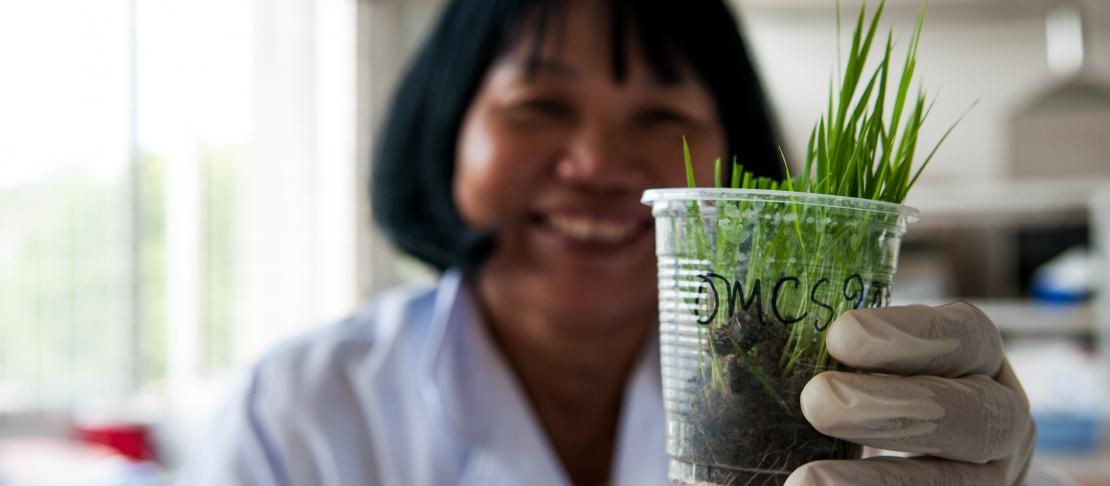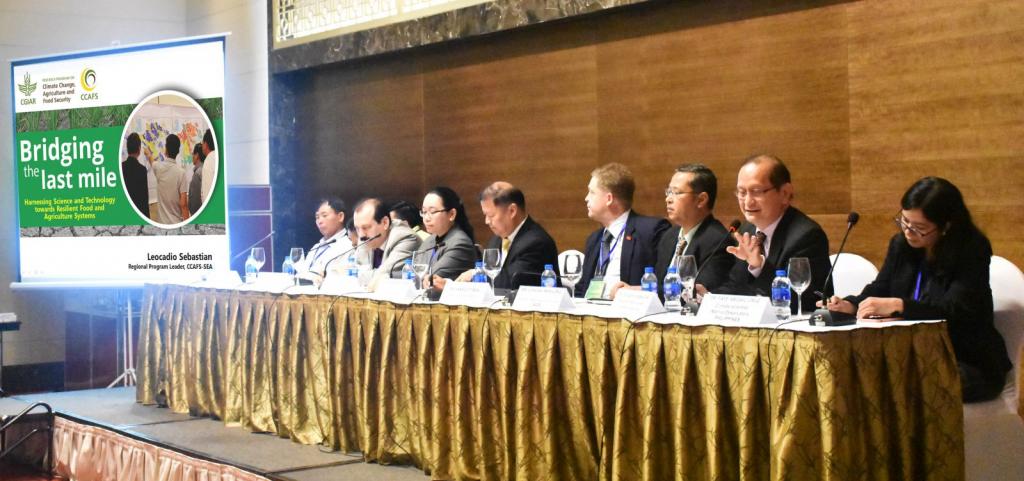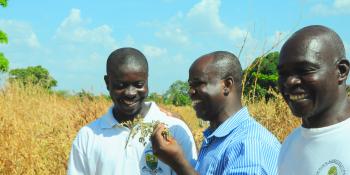Bridging the last mile: Harnessing science and technology for resilient food and agriculture systems

Science and technology is integral in building disaster and climate risk-resilient agriculture. However, priority actions are needed to realize its full potential.
Science and technology (S&T) is crucial in agricultural development, particularly in increasing productivity, improving post-harvest techniques, and creating new tools and products, among others. S&T is also key in addressing the devastating impacts of climate change in agriculture, which was estimated at USD 96 billion between 2005 and 2015 by a new report released by the Food and Agriculture Organization of the United Nations (FAO). Agriculture in Asia was hit the hardest, accounting USD 48 billion worth of damages. To address these issues, the global science community, governments, and international agencies call for a better mobilization of S&T to support disaster resilience and climate change adaptation efforts.
To facilitate deliberations on how S&T can better support disaster risk reduction and resilience building in the agriculture sector, the CGIAR Research Program on Climate Change, Agriculture and Food Security (CCAFS) in Southeast Asia co-organized a session titled Bridging Gaps in Science, Policy and Practice for a Resilient Food and Agriculture Systems. The session discussed issues, such as maximizing S&T advances in assessing vulnerability and risk, strengthening forecast and early warning system, and improving evidence to make the business case for investments in disaster risk reduction and climate change adatpation. The session was part of the the regional conference on disaster risk reduction in agriculture sector organized by the Ministry of Agriculture and Rural Development (MARD) of Vietnam and the FAO Regional Office for Asia and the Pacific held in Hanoi, Vietnam between 15 and 16 March 2018.

Dr. Faye Abigail Cruz, a climate scientist at the Manila Observatory in the Philippines and one of the keynote speakers, focused on the process of preparing and providing high-resolution climate projections and how this information can be applied to the agriculture sector. She also emphasized some challenges and opportunities in bridging S&T, policy and practice for disaster risk reduction and climate change adaptation, such as: limitation in resources; understanding the needs and capabilities of users; communicating climate projections to stakeholders for effective use in policy- and decision-making; and the need for increased and continued engagement between climate providers and users.
On the other hand, Dr. Leo Sebastian, the regional program leader of CCAFS Southeast Asia, shared their experiences in implementing the participatory climate-related risks mapping and adaptation planning (CS MAP) in the Mekong River Delta in Vietnam that shows a successful collaboration between the government and international research organizations in harnessing S&T to address climate-related risks in agriculture.
Dr. Sebastian emphasized that every intervention must be anchored for the farmers and their needs. He said that regardless of the availability of scientific information, farmers will still plant and will look for sources of information. It is then a challenge for the research community to bring good science to farmers and help them make informed decisions. He also added that all the stakeholders should think locally but act with the big picture in mind (consider the value chain, landscape/ecosystem) in approaching disaster-related issues.
Farmers from the Climate-Smart Villages (CSV) in Vietnam joined the discussion as panelists. Mr. Nguyen Tien Minh from My Loi CSV shared their experience with the agro-climatic information systems (ACIS) project implemented by CCAFS Southeast Asia. Led by the World Agroforestry Centre (ICRAF), ACIS aims to engage smallholder farmers in meteorological observations, advisories, and decision-making regarding agricultural management options. Mr. Minh stressed that the success of the project relies heavily on the collaboration among farmers, scientists and researchers, complemented by scientific information and local knowledge.
Dr. Cruz encouraged the development and communication of understandable and relevant information. She added that there should be continuous engagements among scientists, decision-makers, implementers and end-users (farmers and fishers). On the other hand, Mr. Minh suggested that local knowledge of farmers should always be considered and complemented with scientific knowledge. Mr. Nguyen Van Tam, a farmer from Ma CSV, emphasized the importance of building the capacity of farmers. He asserted that “farmer to farmer communication is the most effective means to transfer agricultural knowledge.”
Part of the session was a workshop to identify the top priority actions in accordance to the global S&T roadmap to implement the Sendai Framework for disaster risk reduction. The participants identified some key actions, such as the development of decision-making tools, local capacity building, setting up of platform for collaboration, organizing policy dialogues, inter-organizational collaboration and private sector engagement, investment in tools and practices, information and knowledge management, improvement of agricultural extension services, and the creation of database of disaster risk reduction and climate change adaptation-related information.
Read more:
- CCAFS blog: Koronivia: setting the stage for an agricultural transformation
- CCAFS blog: Learning from Vietnam’s experience on Climate-Smart MAP - South-South Collaboration
- CCAFS blog: Farmers, agricultural advisors need more detailed, area-specific climate information for climate-smart farming
Eisen Bernardo is the Senior Communication Specialist of CCAFS Southeast Asia.



